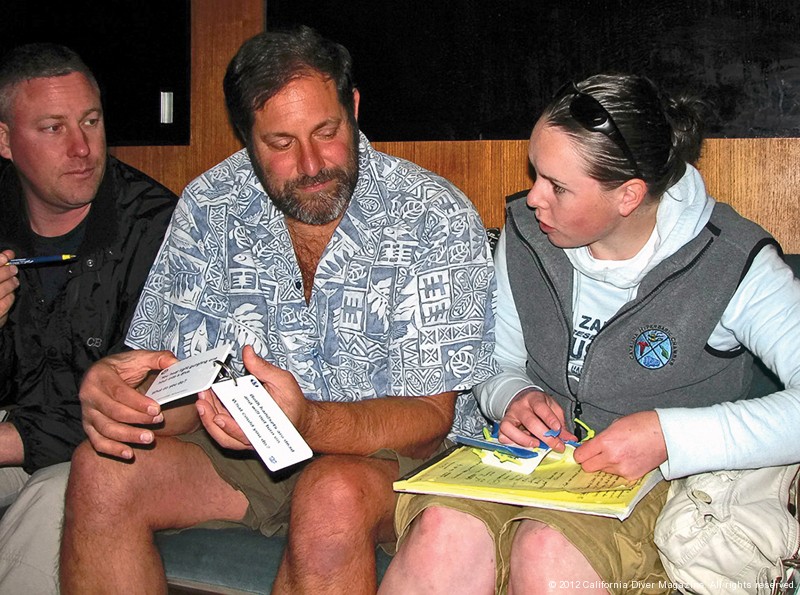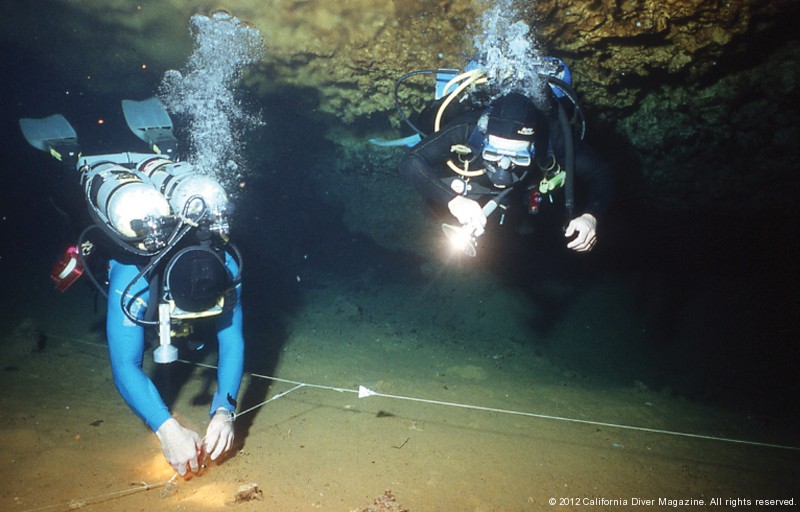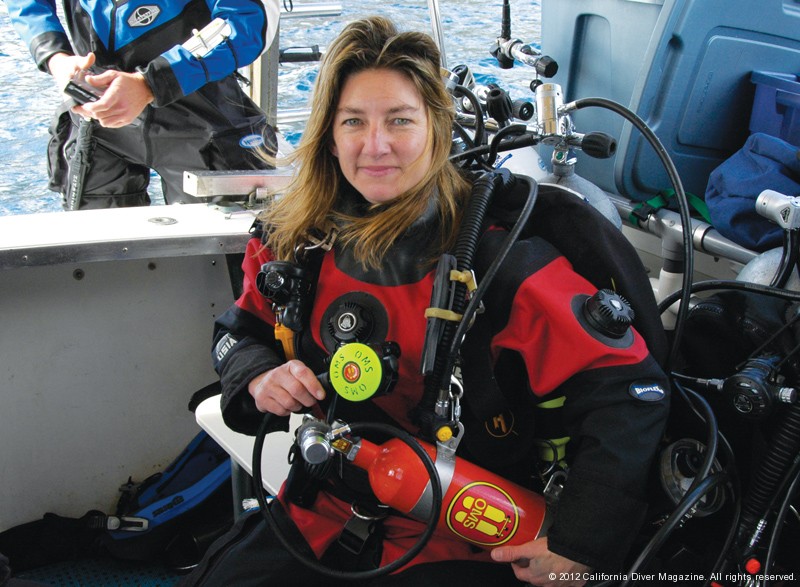So you are interested in learning more about some aspect of technical diving. Some type of training program would seem to be the next logical step. But who do you go to? There are a plethora of training agencies… which is the best? What should you be looking for?
TRAINING AGENCIES
Just which agencies are we looking at? American Nitrox Diving, Inc. (ANDI), Professional Scuba Association International (PSAI), Global Underwater Explorers (GUE), International Association of Nitrox and Technical Divers (IANTD), National Association for Cave Diving (NACD), National Association of Underwater Instructors (NAUI), National Speleological Cave Diving Section (NSS-CDS), Professional Association of Diving Instructors (PADI), Scuba Schools International (SSI), Technical Diving International (TDI), British Sub-Aqua Club (BSAC), Confederation Mondiale des Activites Subaquatiques (CMAS), Rebreather Association of International Divers (RAID), Unified Team Diving (UTD), Multinational Diving Educators Association (MDEA),… the list goes on,… and on, and on. Which is the best? The safest?
Training agencies often start from widely varying initial premises for their structured courses, which may make them seem at odds with each other, but their ultimate goals are the same. For example, GUE, UDT, and NAUI’s technical division all believe in a structured, uniform equipment configuration for all technical divers. Other agencies, like IANTD and TDI, are more flexible in the approach to equipment configuration. Each system has advantages and disadvantages.
One of the choices you need to make is how you personally regard dive instruction. Do you like flexibility? Are you willing to entertain options, and make choices for yourself? Or are you more comfortable with someone telling you exactly what to do? If you are not sure, look at other aspects of your life. How do you cope with and handle open ended assignments? Changes in schedules? Dealing with alternatives? Uncertainty?
Some agencies focus on a particular type of technical diving, like the NACD with cave diving, or RAID with rebreathers. Others, like PADI and TDI, offer a wide range of courses in the technical arena. Specialization often leads to more experience in a given topic or type of diving… but it may be more myopic, channeling instruction and experience to a more confined path than your ultimate interests. Part of your decision should be based on your ultimate goals or objectives in diving. Essentially, one of the key questions is, “Why do I want to be doing this?”
The reality is that each of the agencies strives to do the best possible job. They all want to develop safe, competent divers. There really is no single “best” agency. Each has good instructors… and less good instructors. So what should you be looking for in your instructor.
CHOOSING AN INSTRUCTOR
Part of your selection process should be an evaluation of the instructor. Indeed, this might be the most important criterion of all. Two key questions are, “How long have you been doing this type of diving? How many of these dives have you done?” The more experience an instructor has, the broader their perspective, and the more likely they have knowledge to impart. A part of experience is making mistakes. Everyone learns from their mistakes. The more specialized diving someone has done, the higher the likelihood that they have gone far beyond their “book learning,” and have more wisdom to impart, as opposed to merely knowledge.
How often does the person teach the course? Again, experience is one of the best teachers. The more you teach, the more you learn. Over time I have learned as much or more from my students than I did in my formal dive training. Other factors being equal, an instructor that has taught many students is probably going to be more competent.
What do previous students say about the training they received? Did they feel they gained the information needed to dive safely? What did they think of the instructor’s teaching style? Try to locate students outside of the referrals provided by the instructor. You are more likely to obtain unbiased opinions. Are the former students still doing this type of diving? If so, this is a strong indication of their comfort level after training.
Finally, before enrolling in training, interview the instructor. Try to get a feel for them as a person. Is this someone you think you will get along with, from whom you can learn effectively? Remember, you will literally trust your life with the individual. Are you comfortable with that? Technical dive training is too stressful and difficult as it is without battling personality conflicts or doubts about someone else’s competency.
EVALUATE THE TRAINING PROGRAM
You are probably looking for certification of some type. And yes, all certification cards look the same. But that does not mean the courses leading to “identical” certification cards is the same. Each agency has its own standards. These standards define what should be taught in a class, and sometimes even how. Yet standards provide an incomplete picture, with subtleties that go far beyond the black and white lines of the “letter of the law.”
Compare course offerings by different instructors. Determine what is involved in the course. How many hours of lecture will there be? That is an indication of theoretical background, providing the underpinnings of diving activity. How many dives will you do? How long will the dives be? Ability is directly tied to practical application. The more time spent in the water, the better developed your skill set will be. Water time = better diver!
Often students find that they do not meet proficiency standards at the completion of the “required” dives. Find out how this scenario is handled by the instructor. Some charge an additional tuition fee for extra dives. Others only expect the student to pay for additional expenses, like boat fees for the dive trips. Others issue a certification card at a lower proficiency level, and consider the course completed. The key question here is, “Will I truly be competent after the course?” Finally, ask how the instructor will you help you after the course is “completed.”
SUMMARY
Remember that what I have provided are guidelines. Any single factor may be untrue in any given circumstance. But when taken together, these suggestions should help lead you to a more successful and rewarding instructional program. Take everything with a grain of salt… but stay open to new ideas and approaches. Most important of all, dive safe!
————————————————————————-
About the Author:
Jeff Bozanic was certified as a NAUI Instructor in 1978, is certified to teach diving for the NSS-CDS, NACD, IANTD, TDI, and NAUI. He is active in teaching cave diving, rebreather, nitrox, technical nitrox, and trimix diving courses. He has published extensively on diving education topics, with heavy emphasis on cave diving safety techniques. He has edited/reviewed many diving textbooks, and is the author of Mastering Rebreathers. He has served on several Boards of Directors in the diving community, including as Chairman of the NSS-CDS and as Vice Chairman of NAUI, and as Treasurer on the AAUS Board. He has received the NAUI Outstanding and Continuing Service Awards; the Silver Wakulla, Abe Davis, Henry Nicholson, and International Cave Diving Awards for safe cave diving; the SSI Platinum Pro 5000 Award, and is a NAUI Hall of Honor inductee. In 2007 he was honored as the DAN/Rolex Diver of the Year. Jeff may be contacted at jeff@jeffbozanic.com.




